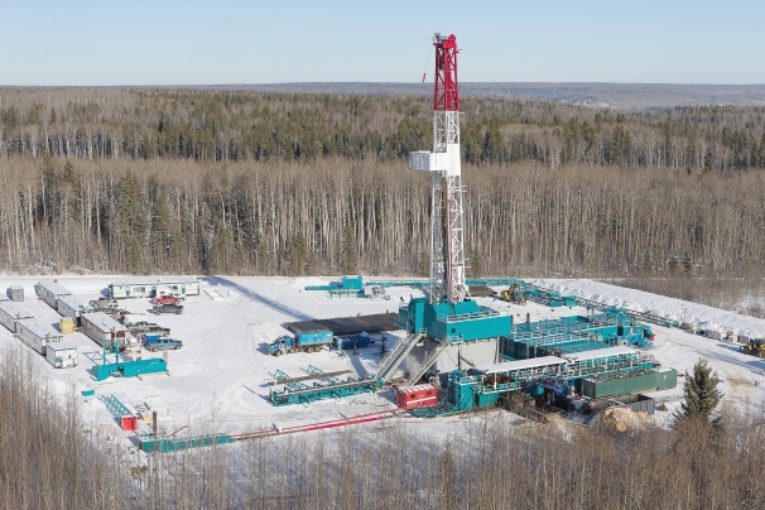
[ad_1]
A funny thing happens to people psychologically when our society/culture/economy gets very good at providing something, particularly for a long period of time: we simply take it for granted and don’t even think about it anymore. Clean water is a good example; in advanced economies, we don’t think twice about whether it will be there tomorrow to shower in or cook our food or flush the toilet. If there is a good side to annual flood seasons, when we observe cars and houses floating down rivers at some random location – and it happens every single year, somewhere – we get a brief glimpse of panicked people who have run out of drinking water and we are reminded that it could happen to us. Of course, fifteen seconds later we’ve forgotten all about it when news of kitten stuck in a pipe comes on, but still, we do get periodic reminders of how precious the commodity is.
In comparison, it’s peculiar how we treat natural gas. On average, we need clean water more than we need natural gas, but come winter, water’s pre-eminent role is not so clear cut. Most major communities that have freezing winters rely to a startling degree on uninterrupted supplies of natural gas, which is mind-boggling if you think about it. Natural gas distribution requires an uninterrupted, pressurized, free-flowing connection between various source points, which are not static, and your house/apartment/office/hospital, and that maze of pipes has to be woven through all the infrastructure of urban life and needs to operate without flaw. It is quite remarkable in itself. Some jurisdictions learn the value and the fragility of supply the hard way, like Ukraine and various parts of eastern Europe, who have had their gas supply cut off by those fun-loving Russians in the dead of winter.
On the market side, it has become remarkable how blasé participants are about gas supply as well. There are logical reasons for that. The multi-stage fracking boom has opened vast new shale fields, and refinement of the completion/drilling technologies has meant a lot more gas from few wells. Additionally, and possibly more importantly, natural gas that is a by-product of oil production is now largely treated as a waste product that is forced onto the market in order to produce the more-profitable oil. Solution gas producers just want to be rid of the stuff, which as you can imagine does not help prices one little bit. Further exacerbating the problem is, ironically, high oil prices, which enhance the profitability of oil wells, meaning the associated gas can in many cases be almost given away for free if that allows oil production.
Commodity markets study hard but at the end of the day tend to simply reflect the giddiness of investor relations presentations. These promotional materials ensure the audience that pretty much every company of significance has thousands, or tens of thousands, of high quality drilling locations, and if any two of these companies are actually speaking objective truth the continent will be flooded with gas forever.
As such, the market watches natural gas storage levels meander well below five year averages, totally unconcerned because this flood of gas is right there whenever we need it.
But what if it’s not?
What if the biggest boom areas – the Marcellus, Permian, etc. – find themselves unable to grow at the rates of the past, through infrastructure or other limitations? What if the rapidly growing export capabilities (via pipeline to Mexico, or expanding LNG terminal capacity) sucks up the current surplus under long term contract?
What if these great fields, which have rewritten the North American energy map, turn out to be finite in size? What if the market analysts are confused by the concept of new well productivity, where they confuse longer lateral wells with better producing wells?
The latter is probably the most serious and overlooked phenomenon happening in the entire natural gas industry. The reason it’s overlooked is thanks squarely to the obfuscation created by many producers, who show maps with their very best producers and on the very next slide indicate that they have “thousands of locations” with the implication being that they will all be equal. Do some quick math on any of the large producers and you’ll see that this is all nonsense, at least from a realistic productive possibility perspective. Candidly, no sane producer would ever tell you that their acreage is homogenous across the entire portfolio, and that the best results can be duplicated in every location. That is the impression that most IR presentations leave behind however, and if people actually believe that…well that’s what the bloated disclaimer is for isn’t it?
It’s possible the consensus is right, that at the slightest price spike the market will be flooded again. It happened with oil, right up until the time it didn’t. The world became fixated on US shale oil production, and, according to the world’s media, OPEC was irrelevant, and all that mattered was the US rig count. This hypnosis can last for quite a while.
Right now, markets are extremely confident that US drillers can produce whatever is required for domestic consumption, for export under long term contracts, to replace coal power in some jurisdictions, and to meet rising air conditioning needs. All is well, until it’s not, and we will find out just how well these handful of big shale reservoirs can respond. The current market pricing grid represents a very big gamble that they can do it easily.
Two years ago, “lower for longer” was the mantra for oil prices; the world was convinced shale deposits would keep prices that way. Now we’re going to find out if it’s the same thing for natural gas.
As a Canadian footnote, things are likely going to remain pretty ugly up here for a while until we get LNG export capabilities. The rumour mill is rampant that one will be approved, but there will be no help for several years even if it is. In the meantime, we’re left at the tender mercies of TransCanada and their view of the world. Their decision to tie in northeastern BC gas volumes and bring them into a glutted Alberta market was most likely a pre-emptive strike in anticipation of LNG-bound volumes heading west, but that tactical genius is small comfort to those enjoying, let’s see, last week’s 83-cent per gigajoule AECO price. To the good people at TCPL: you can do far better than Putin for a role model.
Read more insightful analysis from Terry Etam here. To reach Terry, click here
[ad_2]
You can read more of the news on source



